Latest Posts by buggybugblog - Page 2

I’ve teased it. You’ve waited. I’ve procrastinated. You’ve probably forgotten all about it.
But now, finally, I’m here with my solarpunk resources masterpost!
YouTube Channels:
Andrewism
The Solarpunk Scene
Solarpunk Life
Solarpunk Station
Our Changing Climate
Podcasts:
The Joy Report
How To Save A Planet
Demand Utopia
Solarpunk Presents
Outrage and Optimisim
From What If To What Next
Solarpunk Now
Idealistically
The Extinction Rebellion Podcast
The Landworkers' Radio
Wilder
What Could Possibly Go Right?
Frontiers of Commoning
The War on Cars
The Rewild Podcast
Solacene
Imagining Tomorrow
Books (Fiction):
Ursula K. Le Guin: The Left Hand of Darkness The Dispossessed The Word for World is Forest
Becky Chambers: A Psalm for the Wild-Built A Prayer for the Crown-Shy
Phoebe Wagner: When We Hold Each Other Up
Phoebe Wagner, Bronte Christopher Wieland: Sunvault: Stories of Solarpunk and Eco-Speculation
Brenda J. Pierson: Wings of Renewal: A Solarpunk Dragon Anthology
Gerson Lodi-Ribeiro: Solarpunk: Ecological and Fantastical Stories in a Sustainable World
Justine Norton-Kertson: Bioluminescent: A Lunarpunk Anthology
Sim Kern: The Free People’s Village
Ruthanna Emrys: A Half-Built Garden
Sarina Ulibarri: Glass & Gardens
Books (Non-fiction):
Murray Bookchin: The Ecology of Freedom
George Monbiot: Feral
Miles Olson: Unlearn, Rewild
Mark Shepard: Restoration Agriculture
Kristin Ohlson: The Soil Will Save Us
Rowan Hooper: How To Spend A Trillion Dollars
Anna Lowenhaupt Tsing: The Mushroom At The End of The World
Kimberly Nicholas: Under The Sky We Make
Robin Wall Kimmerer: Braiding Sweetgrass
David Miller: Solved
Ayana Johnson, Katharine Wilkinson: All We Can Save
Jonathan Safran Foer: We Are The Weather
Colin Tudge: Six Steps Back To The Land
Edward Wilson: Half-Earth
Natalie Fee: How To Save The World For Free
Kaden Hogan: Humans of Climate Change
Rebecca Huntley: How To Talk About Climate Change In A Way That Makes A Difference
Christiana Figueres, Tom Rivett-Carnac: The Future We Choose
Jonathon Porritt: Hope In Hell
Paul Hawken: Regeneration
Mark Maslin: How To Save Our Planet
Katherine Hayhoe: Saving Us
Jimmy Dunson: Building Power While The Lights Are Out
Paul Raekstad, Sofa Saio Gradin: Prefigurative Politics
Andreas Malm: How To Blow Up A Pipeline
Phoebe Wagner, Bronte Christopher Wieland: Almanac For The Anthropocene
Chris Turner: How To Be A Climate Optimist
William MacAskill: What We Owe To The Future
Mikaela Loach: It's Not That Radical
Miles Richardson: Reconnection
David Harvey: Spaces of Hope Rebel Cities
Eric Holthaus: The Future Earth
Zahra Biabani: Climate Optimism
David Ehrenfeld: Becoming Good Ancestors
Stephen Gliessman: Agroecology
Chris Carlsson: Nowtopia
Jon Alexander: Citizens
Leah Thomas: The Intersectional Environmentalist
Greta Thunberg: The Climate Book
Jen Bendell, Rupert Read: Deep Adaptation
Seth Godin: The Carbon Almanac
Jane Goodall: The Book of Hope
Vandana Shiva: Agroecology and Regenerative Agriculture
Amitav Ghosh: The Great Derangement
Minouche Shafik: What We Owe To Each Other
Dieter Helm: Net Zero
Chris Goodall: What We Need To Do Now
Aldo Leopold: A Sand County Almanac
Jeffrey Jerome Cohen, Stephanie Foote: The Cambridge Companion To The Environmental Humanities
Bella Lack: The Children of The Anthropocene
Hannah Ritchie: Not The End of The World
Chris Turner: How To Be A Climate Optimist
Kim Stanley Robinson: Ministry For The Future
Fiona Mathews, Tim Kendall: Black Ops & Beaver Bombing
Jeff Goodell: The Water Will Come
Lynne Jones: Sorry For The Inconvenience But This Is An Emergency
Helen Crist: Abundant Earth
Sam Bentley: Good News, Planet Earth!
Timothy Beal: When Time Is Short
Andrew Boyd: I Want A Better Catastrophe
Kristen R. Ghodsee: Everyday Utopia
Elizabeth Cripps: What Climate Justice Means & Why We Should Care
Kylie Flanagan: Climate Resilience
Chris Johnstone, Joanna Macy: Active Hope
Mark Engler: This is an Uprising
Anne Therese Gennari: The Climate Optimist Handbook
Magazines:
Solarpunk Magazine
Positive News
Resurgence & Ecologist
Ethical Consumer
Films (Fiction):
How To Blow Up A Pipeline
The End We Start From
Woman At War
Black Panther
Star Trek
Tomorrowland
Films (Documentary):
2040: How We Can Save The Planet
The People vs Big Oil
Wild Isles
The Boy Who Harnessed The Wind
Generation Green New Deal
Planet Earth III
Video Games:
Terra Nil
Animal Crossing
Gilded Shadows
Anno 2070
Stardew Valley
RPGs:
Solarpunk Futures
Perfect Storm
Advocacy Groups:
A22 Network
Extinction Rebellion
Greenpeace
Friends of The Earth
Green New Deal Rising
Apps:
Ethy
Sojo
BackMarket
Depop
Vinted
Olio
Buy Nothing
Too Good To Go
Websites:
European Co-housing
UK Co-housing
US Co-housing
Brought By Bike (connects you with zero-carbon delivery goods)
ClimateBase (find a sustainable career)
Environmentjob (ditto)
Businesses (🤢):
Ethical Superstore
Hodmedods
Fairtransport/Sail Cargo Alliance
Let me know if you think there’s anything I’ve missed!

I can't stress enough how much I miss StumbleUpon
if you want to see an amazing Star Trek "musical episode," it's The Abduction from the Seraglio staged by the Pacific Opera project. Complete with redshirt orchestra, horny Spock, a Gorn battle, and Klingons doing bat'leth dance choreography.
The plot and score is the same, just rewritten into English and Trek-ified. (Spock's got a whole aria about his human vs. Vulcan struggle. “Yes, my blood is really green. But how much does that mean? Still, I cannot deny my fears. Am I human with weird ears? I’m a Vulcan. I'm a Vulcan!”"












and if you don't have the patience for a 2-hour opera, someone put together a 30 minute highlight reel of a different performance (by the same company, just a different year. there's some casting changes too):
Oh hey, do you know what time it is? It is highly specific resource time!
Today we have the Royal School of Needlework Stitch Bank! There are HUNDREDS of stitch types in the RSN Stitch Bank.

And more added regularly, let’s look at a recent addition
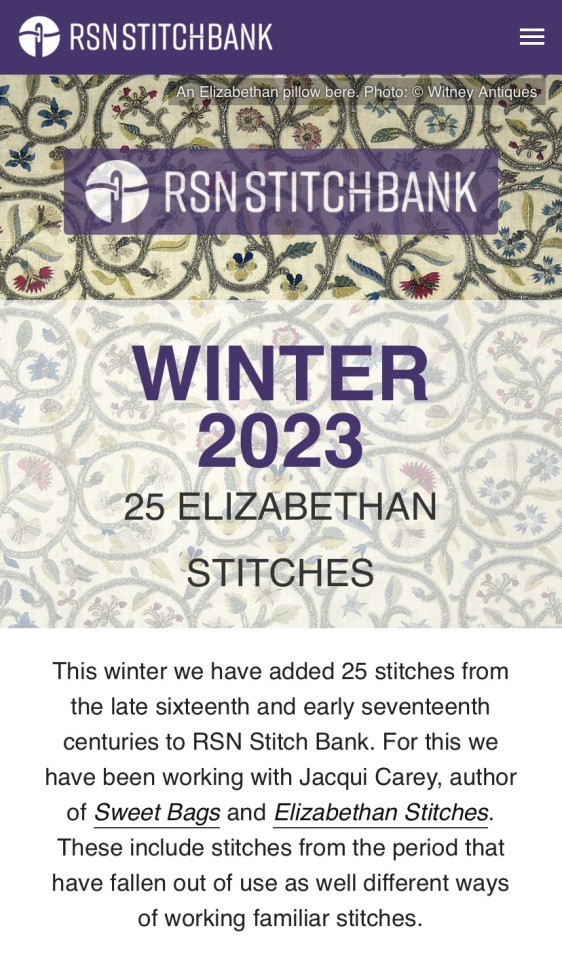

I picked the first one in the 25 recently added Elizabethan stitches, the Elizabethan French Stitch

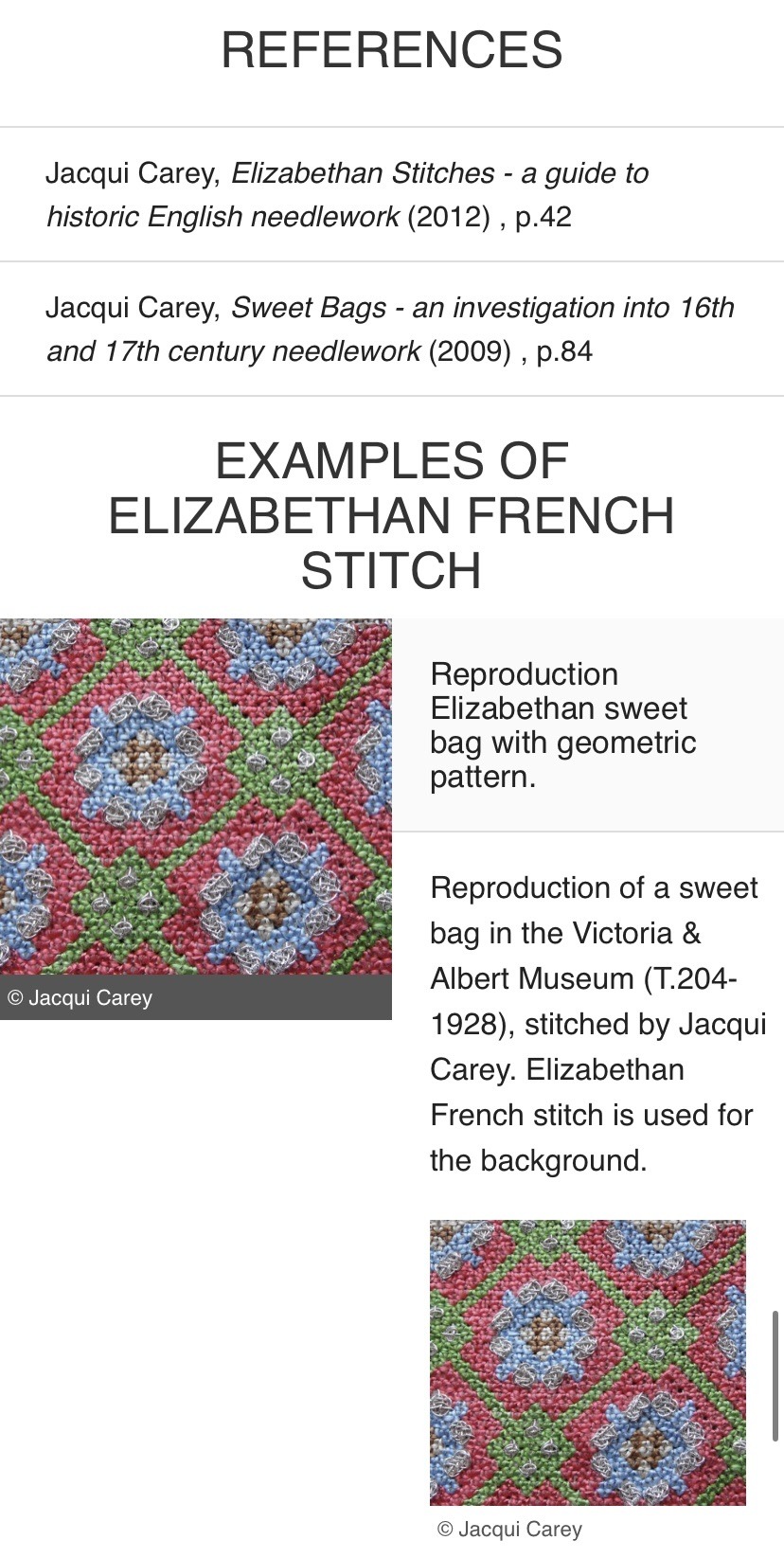
The stitch bank provides written and photo tutorials as well as a video option to learn to do it yourself. There are examples of the stitch in use, resources, references, everything but a needle and thread!
rsnstitchbank.org
Resource List for Learning Malayalam
Hello! Do you want to learn Malayalam but don't know where to start? Then I've got the perfect resource list for you and you can find its link below! Let me know if you have any suggestions to improve it. Here is what the resource list contains;
"Handmade" resources on certain grammar concepts for easy understanding.
Resources on learning the script.
Websites to practice reading the script.
Documents to enhance your vocabulary.
Notes on Colloquial.
Music playlists
List of podcasts/audiobooks And a compiled + organized list of websites you can use to get hold of grammar!

Is the fur on some bugs (like bees or caterpillars or moths) an example of convergent evolution with mammals or is the fur on those bugs not fur but something else?
I suppose any fibrous body coating like bird feathers, mammalian fur, or arthropod setae used for protection/insulation/sensation etc could be considered convergence on a functional level, but insect “hair” is an entirely different material!
arthropod setae are made of chitin (a polysaccharide), while your hair is made of keratin (a protein). setae can have many different forms, such as stiff bristles, sensory hairs, or the scales on butterflies, moths, and other arthropods. here is a good resource if you’d like to read about the various types of setae and their functions:

Is the fur on some bugs (like bees or caterpillars or moths) an example of convergent evolution with mammals or is the fur on those bugs not fur but something else?
I suppose any fibrous body coating like bird feathers, mammalian fur, or arthropod setae used for protection/insulation/sensation etc could be considered convergence on a functional level, but insect “hair” is an entirely different material!
arthropod setae are made of chitin (a polysaccharide), while your hair is made of keratin (a protein). setae can have many different forms, such as stiff bristles, sensory hairs, or the scales on butterflies, moths, and other arthropods. here is a good resource if you’d like to read about the various types of setae and their functions:

OK, so I've been knitting since 2010, and I just learned 2 things.
[1] Magic loop was invented around 2002
[2] Circular needles were invented in the 1910s
That means that, if you were knitting as recently as just over 100 years ago, you either were knitting with straight needles or with double points
??????????????
I fucking hate straight needles, and I fucking despise double points [personally, I know not everyone does]
I like to imagine knitting as this craft that goes back hundreds of years and connects me to history and all that. And in some ways it is
But then I find out that I've been ALIVE longer than the magic loop method? If my grandmother had been able to teach me to knit [she died around the time I was born but was apparently a very experienced knitter], she wouldn't have even known what magic loop was???????
I also wonder if I would have even liked knitting at all If I was stuck with straight needles and double points
Idk my mind is blown over this and I guess I just need to remember that my knitting is a modern craft that is only in some ways related to historical knitting

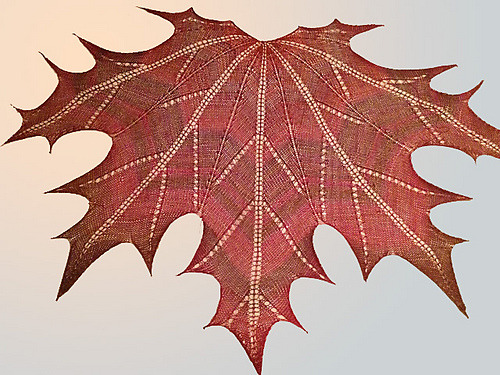
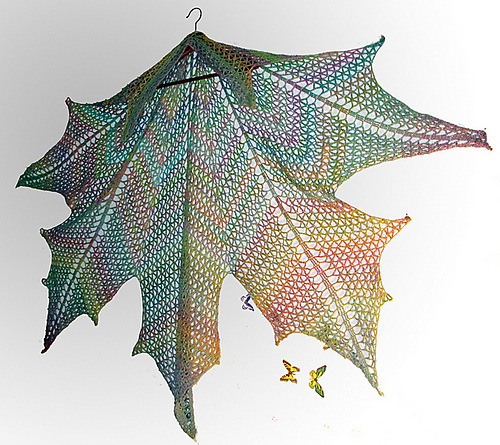
Canada Day is Coming ... Knit or Crochet a Mesmerizing Maple Leaf Shawl: 👉 https://buff.ly/2Tq7fqv

Knit An Army of Caterpillars! Pattern by Miranda Harp: 👉 https://buff.ly/3uZP4WE 🐛
remember you can always get weirder
do you have any reading recs for someone who wants to learn about bugs?
Oh absolutely! There are so many lovely popular science entomology books. I'll name a few, but there are tons more for specific bugs you might be interested in if you search around! I've got four in mind that I've read that I think provide some nice variety.

Buzz, Sting, Bite by Anne Sverdrup-Thygeson
I so enjoyed this book. It's not about any specific insect, but it's a delightful tour of a bunch of cool adaptations and the like in the arthropod world. I think it'd be a good choice if you're new to the whole thing as it's fun, light, and has lots of different groups represented. I learned about a wild interaction between ground-nesting bees and blister beetles from this one that I ended up making a little video on.

Never Home Alone by Rob Dunn
I love the household ecosystem! This book isn't just arthropods — it also covers bacteria and other organisms you might find in your home. But it's so neat! And tonally it's refreshing because it doesn't attempt to scare you about what's in your house. Rather, it invites you to engage with your fellow home inhabitants.

Honeybee Democracy by Thomas D. Seeley
This is such an interesting deep dive into honey bee behavior. I think a lot of people know bees are smart but don't quite realize how complex their social behavior gets. I also am charmed by any book that includes a chapter on incorporating another animal's behavior as a lesson to our own human society (the last chapter is basically "what can we learn from the voting system of honey bees?", an adorable thought).

The Sting of the Wild by Justin O. Schmidt
The Schmidt pain scale is a bit infamous. Dr. Schmidt made a whole collection of insects sting him, and rated them on a scale based on the pain he felt. With descriptions like "someone has fired a staple into your cheek," it's definitely not the most objective, but it is a good time. And following his journey getting stung by everything (including his grad students that followed in his footsteps in some very funny ways) is entertaining.




stardust the isopod!! 🌌⭐️🪲
gift for @nekochan700 and pattern by TumAnnArt!
Enjoyed your Book Riot post “11 Amazing Books About the Wonder of Trees.” You mentioned “there is a lot of fantastic nature writing by authors of color.” Could you recommend some titles or authors? I’ve read a few, but want to read more. Thanks!
Yes of course! Top is of course Braiding Sweetgrass by Robin Wall Kimmerer, which blew me away.
But there's a long list of other books I came across in my research that looked amazing and interesting, but didn't fit the more narrow subject of my list. I added these books to my own to-read list!
Trace: Memory, History, Race, and the American Landscape by Lauret Savoy
There’s Something In The Water: Environmental Racism in Indigenous & Black Communities by Ingrid RG Waldron
The Unlikely Thru-Hiker By Derick Lugo
The Adventure Gap by James Edward Mills
As Long As Grass Grows: The Indigenous Fight for Environmental Justice from Colonization to Standing Rock by Dina Gilio-Whitaker
Soil Not Oil: Environmental Justice in an Age of Climate Crisis by Vandana Shiva
Green Deen: What Islam Teaches About Protecting the Planet by Ibrahim Abdul-Matin
Rooted in the Earth: Reclaiming the African American Environmental Heritage by Dianne D. Glave
Sustainable South Bronx: A Model for Environmental Justice by Majora Carter
Clean and White: A History of Environmental Racism in the United States by Carl A. Zimring
Black Faces, White Spaces by Carolyn Finney
The Colors of Nature: Culture, Identity, and the Natural World - note: the editor is not BIPOC, but the book is: "essays from authors representing diverse backgrounds, including Japanese American, Mestizo, African American, Hawaiian, Arab American, Chicano and Native American"
World’s largest bee, thought to be extinct, found in Indonesia

In 1859, while exploring the remote island of Bacan in the North Moluccas, Indonesia, the renowned naturalist Alfred Russel Wallace made an astounding discovery: the Megachile pluto — the world’s largest bee.
Wallace described the bee, which is about four times the size of a honeybee, as a “large black wasp-like insect, with immense jaws like a stag-beetle.” But for more than a century, that was the only known sighting of the Megachile pluto, and some feared that deforestation had rendered the giant insect extinct.

“It was absolutely breathtaking to see this ‘flying bulldog’ of an insect that we weren’t sure existed any more,” Clay Bolt, the photographer who captured the first images of the species alive, told the BBC. “To actually see how beautiful and big the species is in life, to hear the sound of its giant wings thrumming as it flew past my head, was just incredible.”
Yo guys.
Also @bogleech Look.
Skip Google for Research
As Google has worked to overtake the internet, its search algorithm has not just gotten worse. It has been designed to prioritize advertisers and popular pages often times excluding pages and content that better matches your search terms
As a writer in need of information for my stories, I find this unacceptable. As a proponent of availability of information so the populace can actually educate itself, it is unforgivable.
Below is a concise list of useful research sites compiled by Edward Clark over on Facebook. I was familiar with some, but not all of these.
⁂
Google is so powerful that it “hides” other search systems from us. We just don’t know the existence of most of them. Meanwhile, there are still a huge number of excellent searchers in the world who specialize in books, science, other smart information. Keep a list of sites you never heard of.
www.refseek.com - Academic Resource Search. More than a billion sources: encyclopedia, monographies, magazines.
www.worldcat.org - a search for the contents of 20 thousand worldwide libraries. Find out where lies the nearest rare book you need.
https://link.springer.com - access to more than 10 million scientific documents: books, articles, research protocols.
www.bioline.org.br is a library of scientific bioscience journals published in developing countries.
http://repec.org - volunteers from 102 countries have collected almost 4 million publications on economics and related science.
www.science.gov is an American state search engine on 2200+ scientific sites. More than 200 million articles are indexed.
www.pdfdrive.com is the largest website for free download of books in PDF format. Claiming over 225 million names.
www.base-search.net is one of the most powerful researches on academic studies texts. More than 100 million scientific documents, 70% of them are free
btw I've found these stretches from the WAK blog very helpful when knitting a lot:
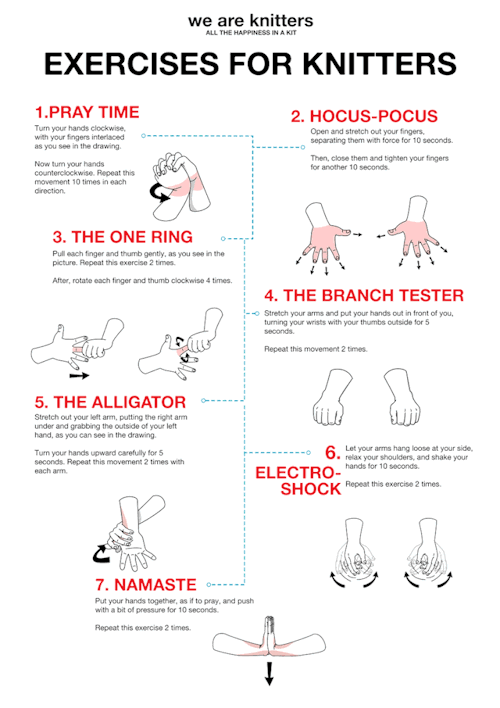
Plus make sure to take breaks regularly - and stop if anything starts to hurt!
especially with gift knitting I know it can be tempting to push through it for a deadline, but it's really not worth causing long term injury. (And anyone knit-worthy should be understanding of that, imho.) Stay well :)


This Realistic Big Crocodile Amigurumi Pattern From Tricks Of The Crochet Is Simply Magnificent! 👉 https://buff.ly/3JiHHlo 🐊
when i say my gender changes to the tune of the bit i mean a man’s gotta do what a man’s gotta do and if he can’t then god forbid women do anything
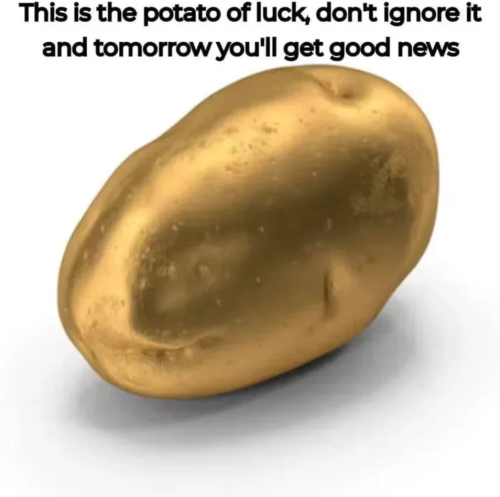


I saw pill bugs on here a few weeks ago and really wanted to make my own! The pattern is a bit rough but I hope it works (I tried to get it perfect for like a week before calling it good enough).
Just print out (or copy from a screen) the first page and cut out the pattern pieces. Hopefully the pictures on page two will help but if not I will do my best to answer any questions!
Hope you enjoy and make your own lil isopod friend!
If anyone makes this, I would love to see pictures 💕
"In the 70s it was black and minority ethnic people, in the 80s it was gay people, trans people are just the latest to get it in the neck from comedians who can't be bothered to try at their jobs anymore. I cannot stand there and watch another dogshit comedian go: 'Ooohh if a woman can identify as a man, maybe I'll identify as a chair!' Why don't you identify as good comedians, you hack motherfuckers?!"
- Nish Kumar: "It's In Your Nature To Destroy Yourselves pt.2"

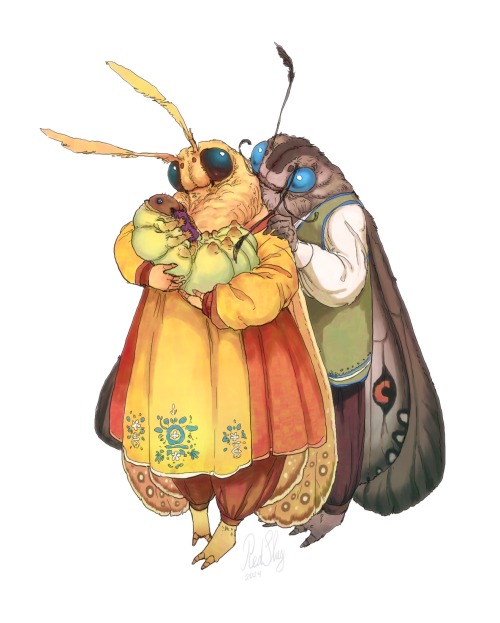
![Thri Kreen Pretty Cool :]](https://64.media.tumblr.com/7eed1d2a51a96e5d946140aa69653579/bb870c83485aa5a7-42/s640x960/c973f4716e3979bf4c4fe7189d6e64856bd04174.png)









